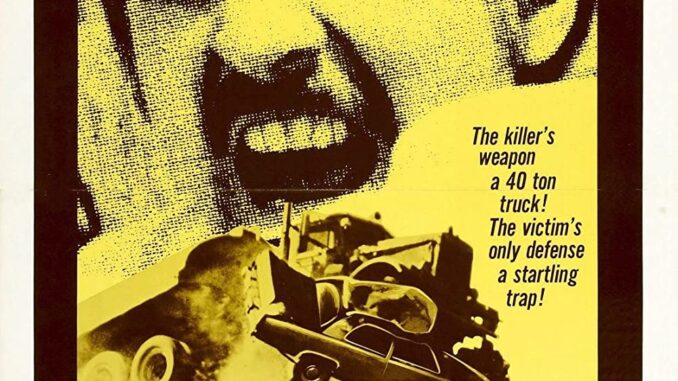
On social media, one of the TTRPG designers I deeply respect asked her network of creators for their preferred RPG chase system. Her friend’s list is a who’s who of tabletop gaming, yet the question received a mix of answers (listed at the end of this article). That question – When conducting a chase of any kind, what system did they prefer? – felt like a simple question that should have received a registry’s worth of RPG names. Instead, it was a mid-sized list of favorites. More surprising than the answers was the silence that the question generated. By “silence,” I mean very few creators responded. That lack of engagement didn’t feel like an uncaring void; no, I took the truncated list of respondents as an answer: Most creators don’t love the existing RPG chase systems.
 Maybe I’m wrong, maybe the algorithms buried that post in a downbeat. However, I have to admit, I don’t have any favorite chase options. That leaves me with this thought: Chase systems need some innovation. This article will talk about what might inspire a chase system or what story it might tell, but it will not propose a system. It’s daydreaming about the system, after all.
Maybe I’m wrong, maybe the algorithms buried that post in a downbeat. However, I have to admit, I don’t have any favorite chase options. That leaves me with this thought: Chase systems need some innovation. This article will talk about what might inspire a chase system or what story it might tell, but it will not propose a system. It’s daydreaming about the system, after all.
Because you may have a favorite chase engine, let me put in a disclaimer: I have not played every RPG. This articles isn’t written to say there have not been good chase sequences at your gaming table. I have no doubt you have many favorites. I know I’ve been through some fun hunts where the dice kept the chase moving and fun. Despite their fun, I feel those chases worked due to quality GMing and the right dice rolls over the RPG engine being fine tuned. I say that if you had a great experience, it may be that your great escape was more great GMing than exceptional rulesets. But, there’s the likelihood that I’m missing a great system and hope to hear about it in the comments.
When I write “chase system” I’m not trying to be cryptic, I mean a set of rules designed to simulate chases, races, and hunts. Something that offers the timing and tension of the chase sequences from films like Bullitt, Mad Max 2: The Road Warrior, Duel, or The Bourne Identity. Capturing that experience in tabletop seems to be difficult when compared to films. The camera and editing establish pacing through speed, stunts, angles, and cuts. The question here is, how would you bring that cinematic feel to tabletop? Alternately, what is the “right” tabletop feel for chases?
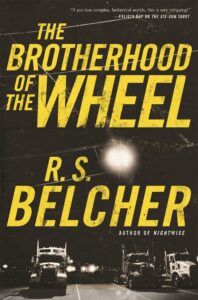
For me, thinking about chase mechanics is a timely question as I’m nearing a major milestone in creating* my next project, FATE-nheit 4D6. With one project marching towards its debut, I’m toying with what’s next and, among the options, there’s an RPG about possessed drivers, evil vehicles, car chases, and ritual routes to rid the roads of raging demons. Inspirations for this includes Stephen King’s Christine, Supernatural, and R.S. Belcher’s The Brotherhood of the Wheel, a series about road warriors defending the highways. These concepts and others inspired some of the beats for this world, but there’s enough variance that the RPG I’m considering would be its own property. While I don’t know if my road rage RPG concept will ever leave the that-would-be-neat design phase, I feel like there’s enough there to think on what the mechanics could be.
For any game of wheeled warriors, a chase system – a good chase system – would be critical to bring any of those tales to tabletop. Since these stories need a set of mechanics meant to create action and tension the question is, what would work best to bring that about? For these settings, it’s possible to lean into the speed and cars and Michael Bay style explosions. It may work best to be fast and simulate the bumps and accidents that give those moments their suspense. For this style of storytelling, the system needs to give each player something to do during the chase sequence so they don’t feel left out. It needs to offer a real chance of successfully running the other car down (crash, knock them off the road, run out of gas, engine failure, etc.) or the chased car getting away.
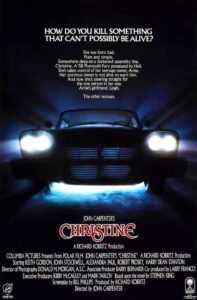
Going deeper, what style of race am I trying to recreate? There are two narrative choices to decide between. Those choices are focused on what part of the race you’ll highlight. The beginning to middle, the length of the event with all of the near misses and crashes, or the end where we learn the conclusion.
The beginning to the middle might best be seen as Disney’s 1949 short, The Legend of Sleepy Hollow. In that tale, we get the chase with a strong start and a satisfying middle, but the end is never revealed in detail. With an open ending, we find satisfaction in the story leading to it, which, in my opinion, that cartoon excels at. Do I want a game that conveys the twists and turns?
The conclusion of the chase is the most important element in any long term narrative. What should that final moment be? Obviously, if I only concern myself with the, ahem, end of the road (oy), it’d be an easier system, but it might not satisfy the action of this world.
Beyond what would be specific to the narrative that I’m thinking on, the chases will be three way affairs with a victim, a demon chaser, and a heroic chaser trying to save the victim and stop the demon. How do we accomplish all of that in a smooth, fun format?
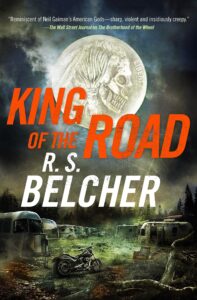
Really, I’m open to either narrative option so long as I can figure out the “right” engine to convey either the middle or the end. Mechanically, I’m open to any option be it dice, cards, tokens, bets, spinners, abstract art, Jenga, or narration? What tool will we use to randomize the results? What elements will the game have? Beyond generic stats and specializations related to driving, mechanics, and the occult, we’ll need to give everyone in the chase something to do; a way to contribute.
So, as you can read, that’s where I’m stumped. What story do I want to tell and what system, new or existing, will create edge of your seat experiences? Barring edge of your seat, what system will make sense as a storytelling tool that explains how all of the actions involved in running a car down led to this conclusion?
I reviewed the systems list in the post for the original question and I’m still trying to find the “perfect” answer. When it arrives, I’ll be ready to write that RPG. While I consider this, dear reader, what RPG chase system speaks to you?
Suggested Chase Systems From The Original Question:
- Pathfinder 1e’s Chase cards set (this one received multiple votes)
- Night’s Black Agents (this one received multiple votes)
- Chronicles of Darkness
- Traveller (Mongoose 2e)
- Feng Shui
- James Bond
- TSR’s Indiana Jones RPG
- Blades in the Dark’s clock system
- Savage Worlds
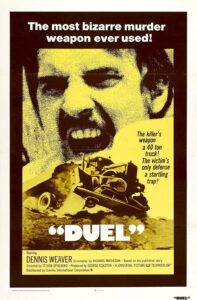 *FATE-nheit 4D6 is not in the can, but the art is finished, a good chunk of the writing is done, leaving more writing, revisions and editing, layout, marketing, and crowdfunding. In other words, I’ve got a ways to go.
*FATE-nheit 4D6 is not in the can, but the art is finished, a good chunk of the writing is done, leaving more writing, revisions and editing, layout, marketing, and crowdfunding. In other words, I’ve got a ways to go.
Egg Embry participates in the OneBookShelf Affiliate Program and is an Amazon Associate. These programs provide advertising fees by linking to DriveThruRPG and Amazon.
Latest posts by Egg Embry (see all)
- New Gamemaster Month 2023 - January 20, 2023

I’m not too familiar with any of those systems – I wish I was! – but I know 5e and FFG narrative dice really well, have run a lot of chase scenes in them, and know what elements are necessary for a good chase scene.
For me, a fun chase scene isn’t pitting one party against another but instead pitting both parties against the environment – the obstacles are the adversary to be outwitted and the opponent just a reason to keep on going. It’s creative shortcuts and the chance to catch someone. Every
A fun chase scene to me is characterized by obstacles and creative shortcuts and outwitting one’s adversary, whether they be pursuer or pursued. It’s Daniel Craig chasing a freerunning Sebastien Foucan in Casino Royale just as much as it is Mini Coopers driving through tiny hallways and drainage pipes in the Italian Job or TIE fighters chasing the Millenium Falcon through asteroid fields or the bowels of the second Death Star.
My ideal system can describe the environment just as well as any NPC or vehicle, and I’ve never seen a system that can make the environment a fully fledged NPC.
With chases executed by the mechanics of participant vs environment, deciding where the participants are, relative to each other, is as simple as comparing their relative success against the environment.